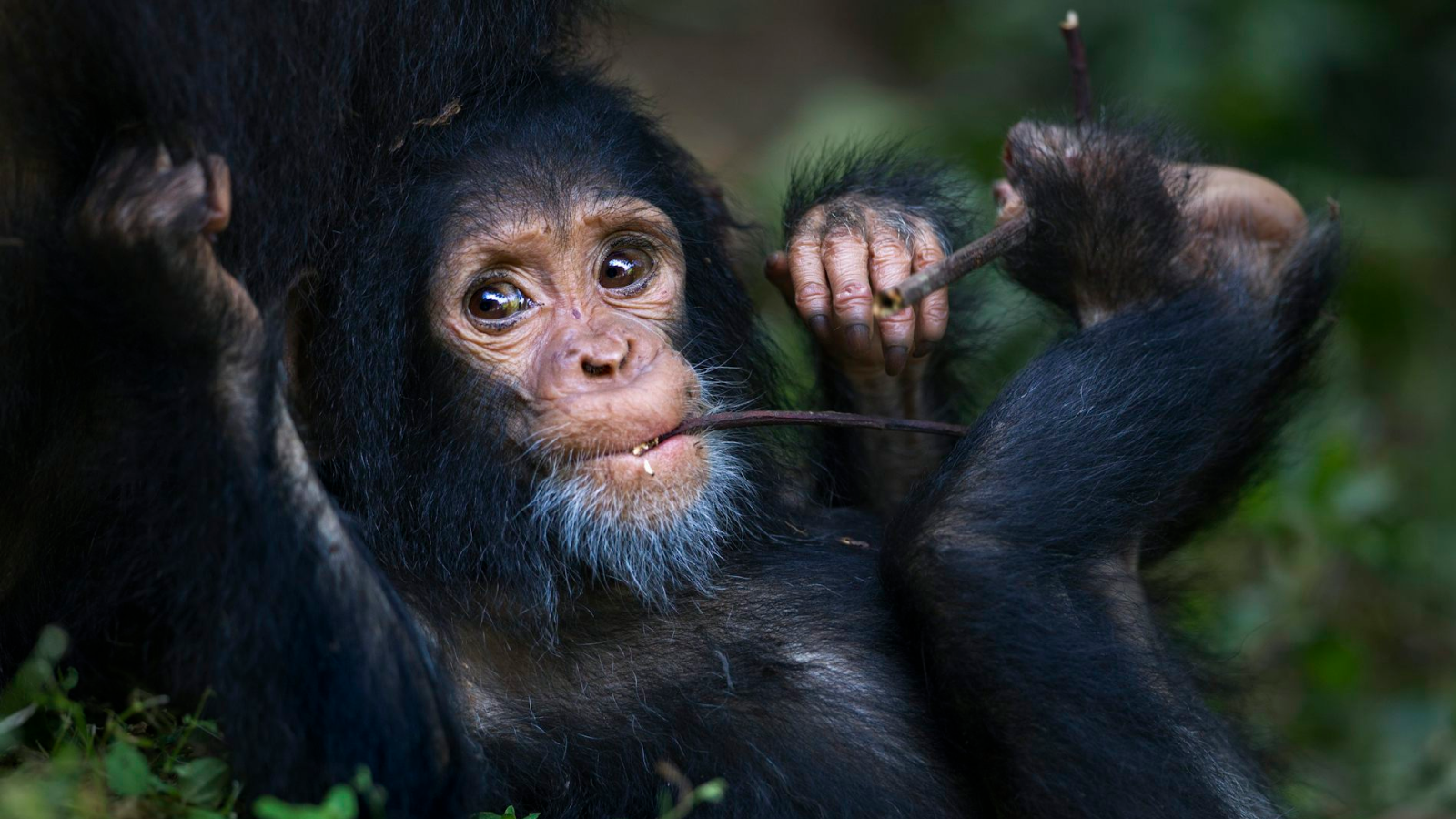Rocket-like jellyfish, regal Komodo dragon and harrowing whale rescue — see the stunning Ocean Photographer of the Year 2025 finalists
Finalists in the Ocean Photographer of the Year 2025 competition capture beautiful images of animals and people oceans.
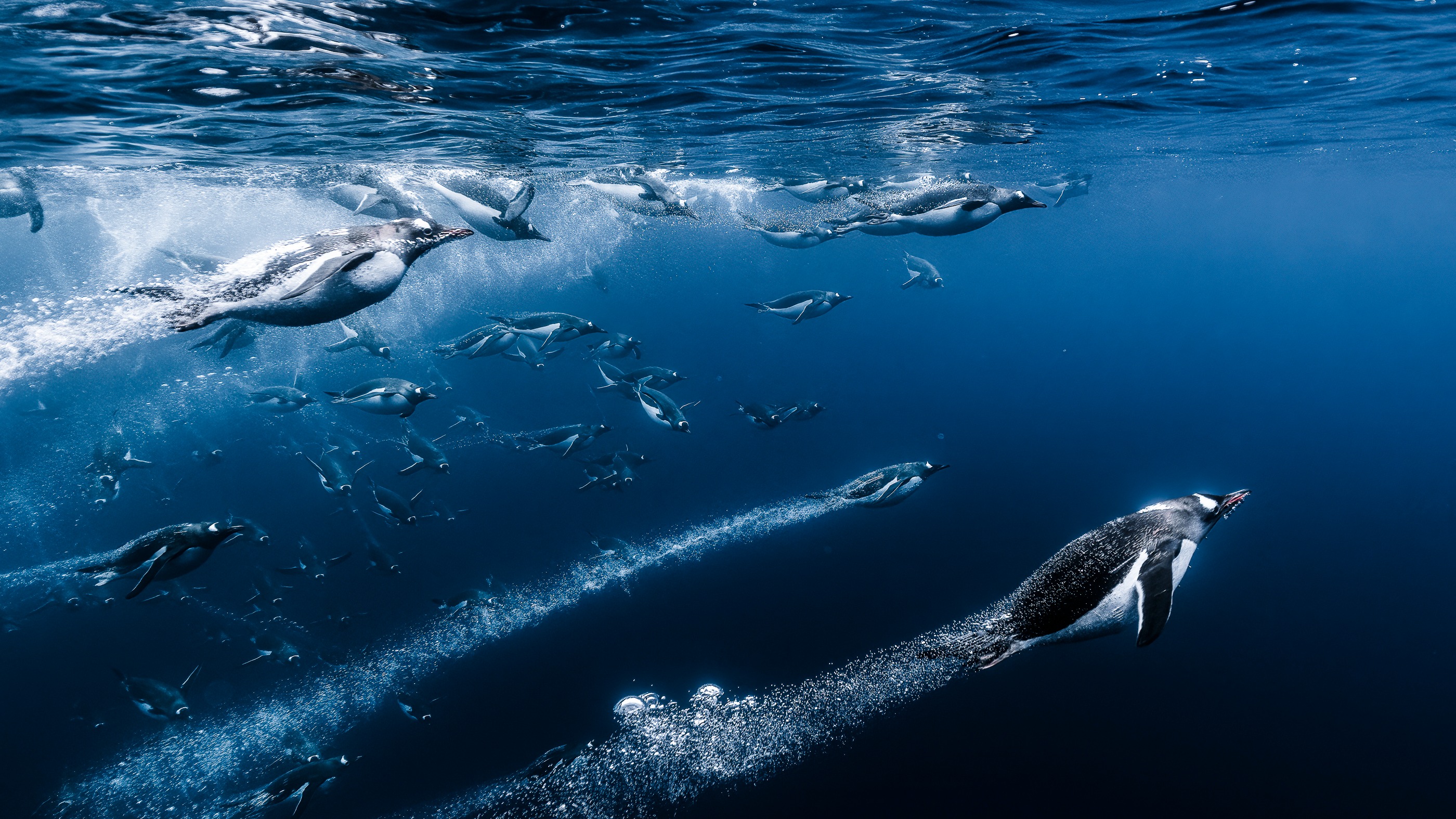
A rocket-like jellyfish, a majestic Komodo dragon and a dangerous surfing encounter are just a few of the stunning photographs captured by the finalists for the Ocean Photographer of the Year 2025 competition. The competition includes categories such as Impact and Hope, which have solicited breathtaking photographs that capture diverse forms of marine life and human interaction with the ocean.
The overall and category winners of the contest, hosted by Oceanographic Magazine and watch company Blancpain, will be announced in September. But all of the finalists' photos emphasize the need to protect the planet.
"In the midst of a deepening climate and biodiversity crisis on our blue planet, ocean photography has never been more important," Will Harrison, director of Ocean Photographer of the Year, said in a statement from the organization. "These images are far more than just beautiful; they are powerful visual testaments to what we stand to lose, and they remind us of the urgent need for protection."
Here are some of the gorgeous photos.
Synchronized swimmers

Photographer Yuka Takahashi, a finalist in the "Young" category of the competition, captured a pair of synchronized humpback whales in French Polynesia swimming through rays of sun. "These two humpback whales are always seen together, and I was fortunate to capture this rare moment of synchronicity," Takahashi said. "To me, this photo reflects the strong bond between them while also revealing their playful and curious personalities."
Warm bath
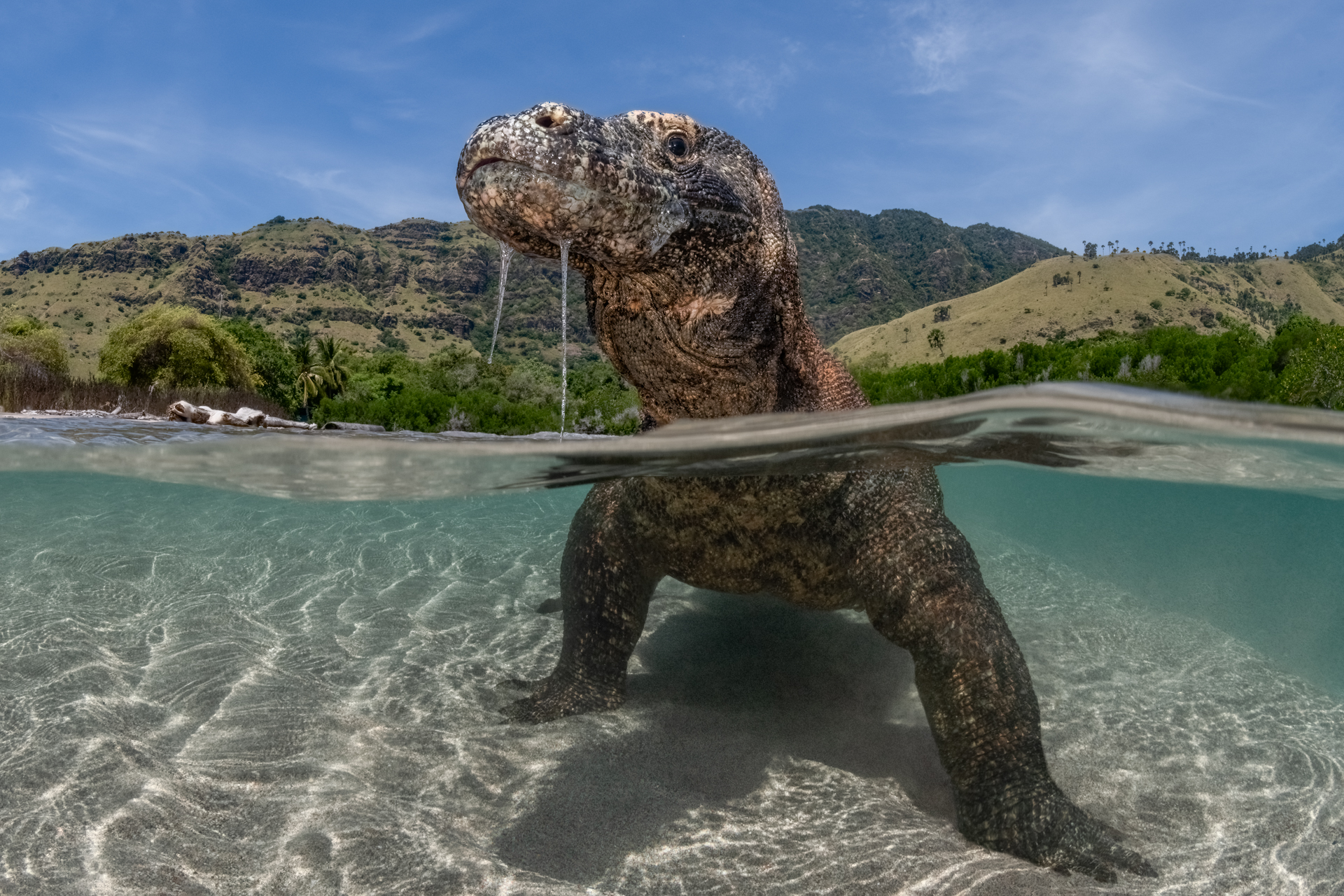
In this image, snapped by "Wildlife" category finalist and photographer Suliman Alatiqi, a Komodo dragon (Varanus komodoensis) looms over an Indonesian shore. Because Komodo dragons are cold-blooded, they rely on cold water or mud to regulate their body temperature in the summer. They also travel across seabeds to search for food and mates.
Get the world’s most fascinating discoveries delivered straight to your inbox.
Collateral damage

Photographer Natnattcha Chaturapitamorn snapped this image of fishers unloading their catches at a Bangladeshi harbor during sunrise, which is a finalist in the "Impact" category.
"Amidst this industrious energy, the presence of an endangered species serves as a reminder of the urgent need to protect marine biodiversity," Chaturapitamorn said. "As global fish stocks decline, safeguarding threatened species like this is vital, not only for ecological balance but for the long-term sustainability of fishing communities that depend on the ocean’s bounty."
Stranded
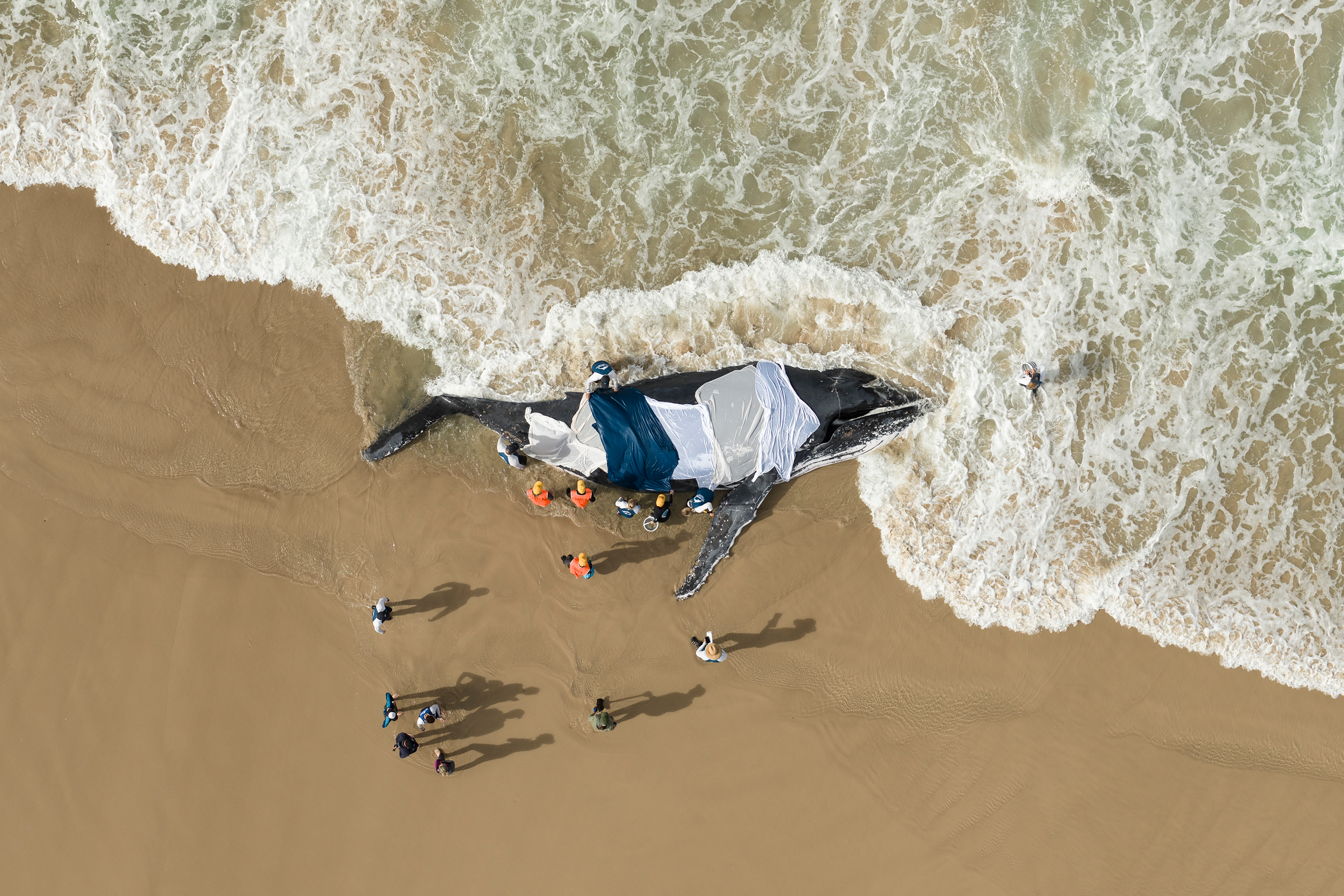
On July 1, wildlife veterinarians received a call about a humpback whale stranded on an Australian beach, and photographer Craig Parry documented the harrowing scene from above. For 15 hours, rescue teams and other members of the community worked to save the whale but were unsuccessful.
"While the outcome was heartbreaking, witnessing the collaboration and compassion shown by multiple agencies and volunteers was incredibly moving — a powerful reminder of what can be achieved when people come together with a shared purpose," said Parry, whose photo is a finalist in the "Human Connection" category.
School of fish
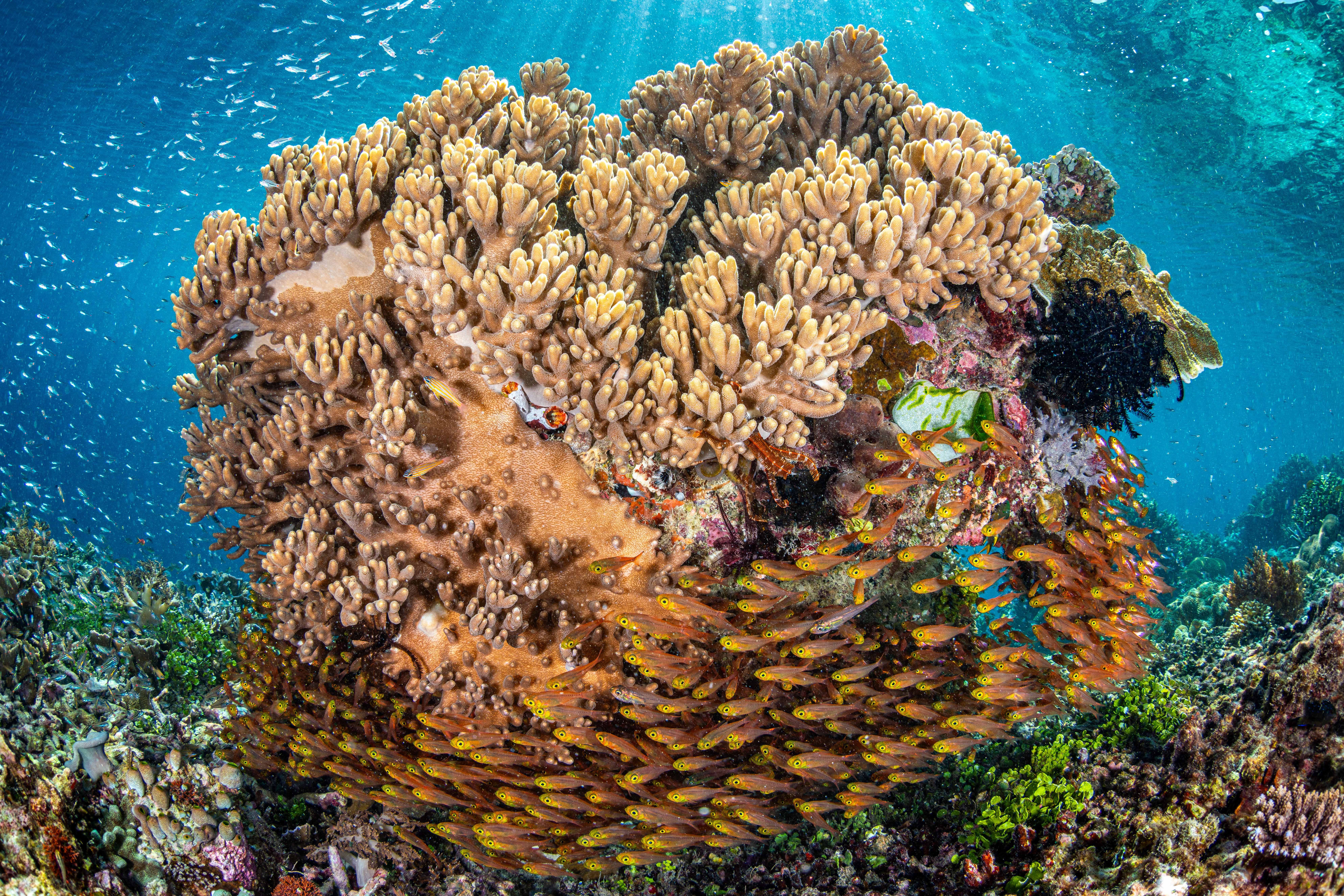
This mesmerizing image, taken in Indonesia by photographer Kim Hyeon Min, captures a school of juvenile fish circling around a tower of coral and is a finalist in the "Hope" category. The vibrancy of the coral suggests it has been unaffected by bleaching and is still able to host a miniature ecosystem for surrounding creatures. "In a time when marine ecosystems are rapidly disappearing, this image is a reminder of what we still have — and a hopeful glimpse of what we must protect for the future," Hyeon Min said.
Otherworldly jellyfish

Jellyfish are often described as alien-like, and this ethereal image captured in Spain by photographer Toni Bertran Regàs takes that comparison to new heights with this finalist in the "Fine Art" category.
"I've always been fascinated by the resemblance between jellyfish and space rockets," Bertran Regàs said. "I was looking for a photograph that conveyed that connection: a rocket leaving Earth. To do this, I used a fisheye lens and took the photo just as the sun was rising. Snell's Window" — an underwater optical phenomenon — "helped me create the Earth, the particles were the stars, and the sun luckily appeared behind it."
Monster waves
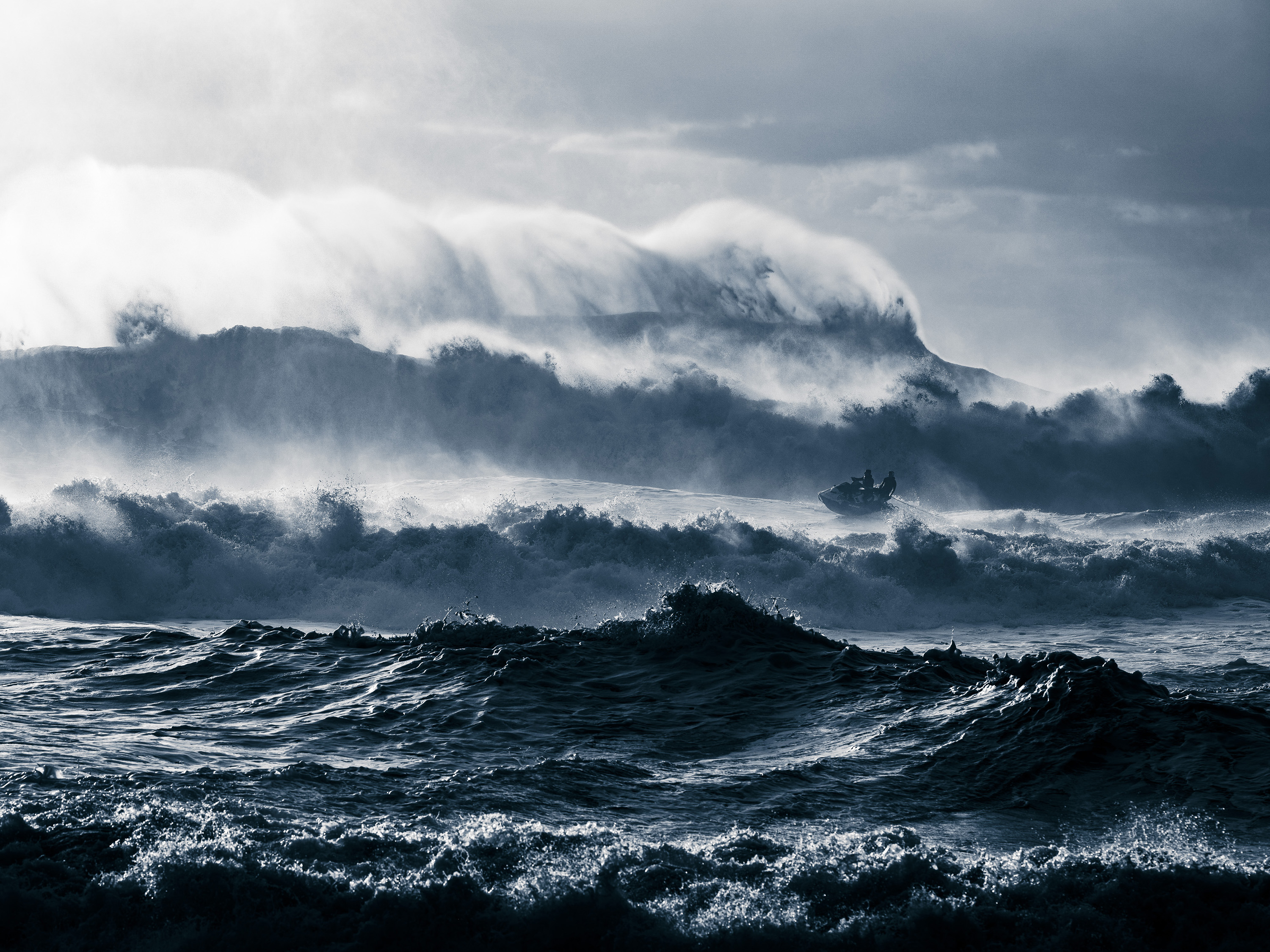
Photographer Ben Thouard, a finalist in the "Adventure" category, captured a day of rough seas in Nazaré, Portugal. Though the water was too dangerous for many surfers, two gave it a go. Despite the difficulty of photographing between huge waves and through salt water in the air, Thouard eventually shot this moment.

Perri Thaler is an intern at Live Science. Her beats include space, tech and the physical sciences, but she also enjoys digging into other topics, like renewable energy and climate change. Perri studied astronomy and economics at Cornell University before working in policy and tech at NASA, and then researching paleomagnetism at Harvard University. She's now working toward a master's degree in journalism at New York University and her work has appeared on ScienceLine, Space.com and Eos.
You must confirm your public display name before commenting
Please logout and then login again, you will then be prompted to enter your display name.


